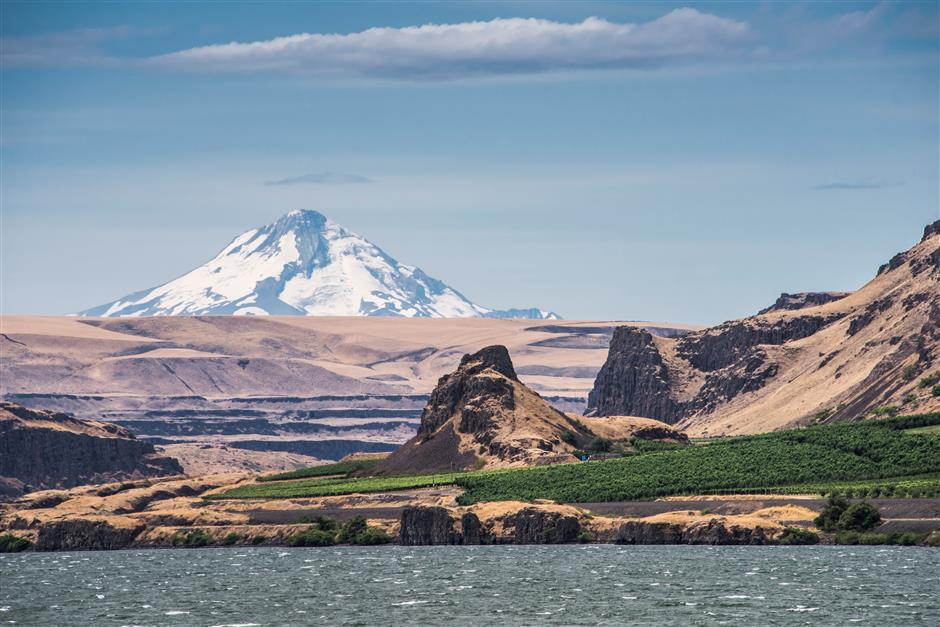Washington State answers next big wine question

The evolution of the wine appreciation in China continues. China is already the world’s second largest wine market, largest red wine market and biggest market for Bordeaux wines. China also has the most students in wine certification classes. So, all these mighty accomplishments begs the question: what’s the next great thing? One very good answer would be Washington State wines.
Heritage
The Hudson’s Bay Company planted the first vines in Washington State at Fort Vancouver in 1825. An influx of French, Italian and German settlers helped spread the cultivation of vines and by 1910 winemaking spread throughout most the state. The 1920 Volstead Act, or Prohibition as it was more commonly called, put the brakes on winemaking throughout the US including Washington State. However, the industry quickly rebounded after the act was repealed in 1933.
The Washington State winemaking industry received a huge impetus in the 1960s when legendary winemaker Andre Tchelistcheff started advising Chateau Ste. Michelle and mentoring other producers in the state. Celebrated Napa Valley figures like Robert Mondavi, Joe Heitz and others simply referred to Tchelistcheff as The Maestro. His contributions included the use of cold fermentation, frost protection methods, malolactic fermentation and terrior sense.
In the late 20th century forward thinking producers like Chateau Ste. Michelle, Associated Vintners and others started focusing on premium wines and varieties more suitable for the challenging climate. Frequent seasonal frosts and freezing temperatures made it necessary to use new technologies and techniques to protect the vines and there was also a move toward cool climate varietals. The use of drip irrigation mitigated the negative influence of uneven rainfall. Today, the Washington State wine industry is worth over 4.8 billion US dollars with more than 50,000 acres (202.34 sq km) under vine, second only to California.

Spring Valley vineyard and rolling wheat fields
Character
Most Washington State vineyards are fortuitously located between the 46N and 47N latitudes, the same latitudes that favor Bordeaux and Burgundy. Wines are made throughout the state but many of the best vineyards are located in the east where the Cascade Mountain mitigate the precipitation and weather extremes of the western regions.
There are recognized regions, including Columbia Valley AVA, which produces the vast majority of wines as well as the highly respected Yakima Valley AVA and Walla Walla AVA.
Washington State wines tend to exhibit a fruity exuberance that one might expect from New World wines but importantly they also feature good freshness and balance.
These latter qualities are often associated with the Old World. This desirable union of New and Old World styles is something many wine regions claim but few actually achieve. And this is what helps make Washington State’s wines so desirable.
With a few notable German and Italian exceptions, the grapes of Washington State wines tend to be French in origin. Cabernet Sauvignon leads the way with over 4,000 hectares under vine making wines of good structure.
Not far behind is Merlot that is used to make lush and concentrated reds with good fruitiness and supple tannins.
Syrah is a new but rising star that’s gained acclaim for rich dark fruit wines with pleasant spicy, leather and coffee notes.
Chardonnay is the leading Washington State white variety with over 3,000 hectares under vine, followed by Riesling. Fresh Sauvignon Blancs, textured and complex Semillons and aromatic Gewurztraminers are also produced.
The state has also had a long run of good to excellent vintages dating back to 2000. Recent vintages have been historically hot with winemakers referring to 2013, 2014 and 2015 as hot, hotter and hottest.
Producers
It’s impossible to discuss Washington State wines without mentioning the pioneering Chateau Ste. Michelle winery. It all started half a century ago when a small Washington State winery named Ste. Michelle Vintners released their first premium Old World-style Cabernet Sauvignon from the Yakima Valley.
At the time, few could envision that this ground-breaking wine would mark the beginning of one of the wine world’s great success stories.
Today according to the respected wine publication Wine Spectator, Chateau Ste. Michelle makes more bottles of 90+ point wines than any other winery in the world.

Varieties:
The most important varieties used to make rose wines in the Central Valley are Cabernet Sauvignon, Merlot, Syrah and Camenere.
Key term:
Skin contact occurs during the maceration process when the skins of the grape provide the color and tannins of a wine.
About the author
ISACS is the founder and CEO of EnjoyGourmet, a leading gourmet digital (www.enjoygourmet.com.cn) and print media company in China. He has authored over a dozen wine and food books including the awarded ISACS Guides and other gourmet books and is a wine consultant to governments, wine regions and organizations. He also hosts wine events for leading organizations and companies throughout China. Contact John via jcolumn@enjoygourmet.com.















